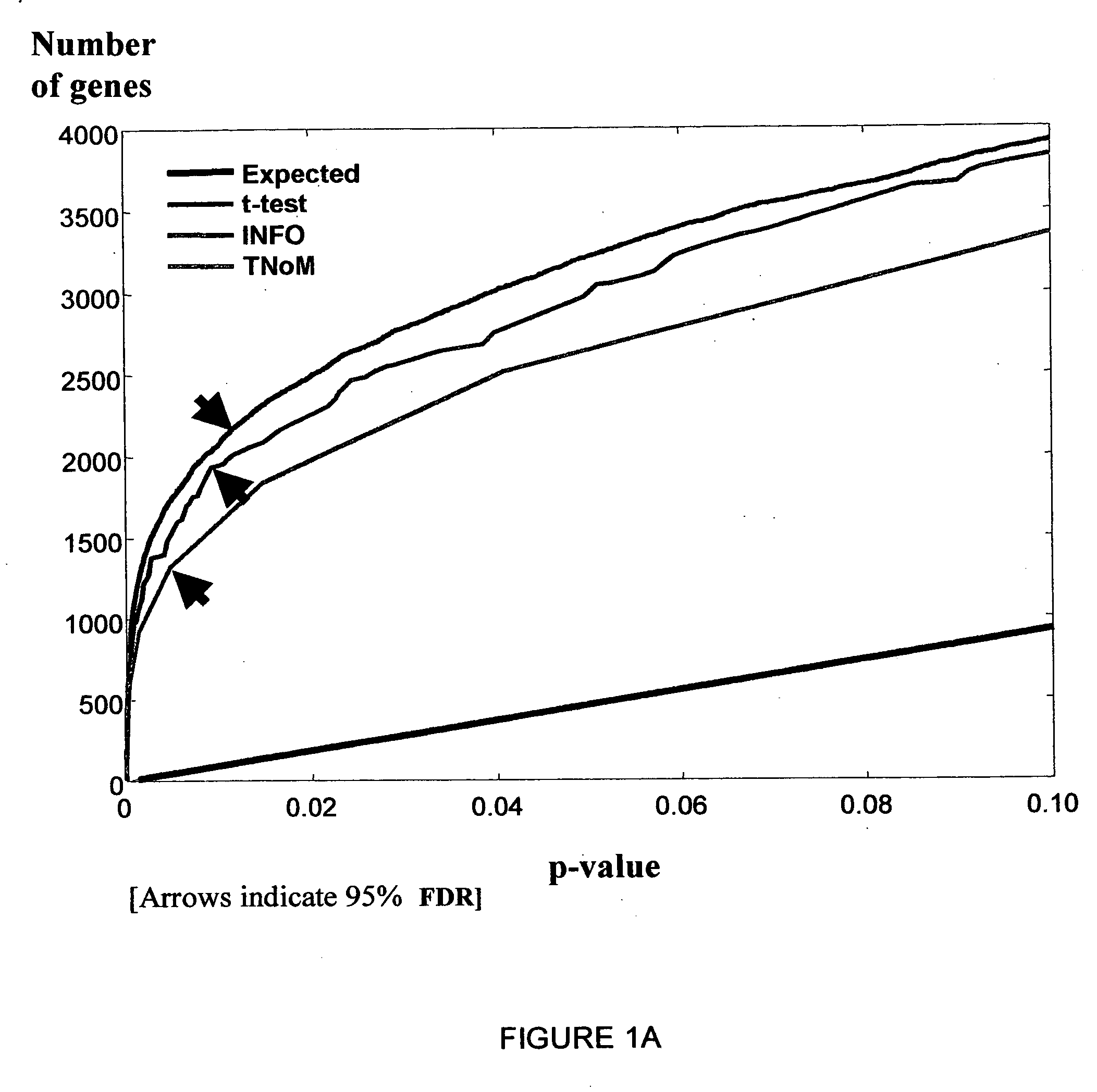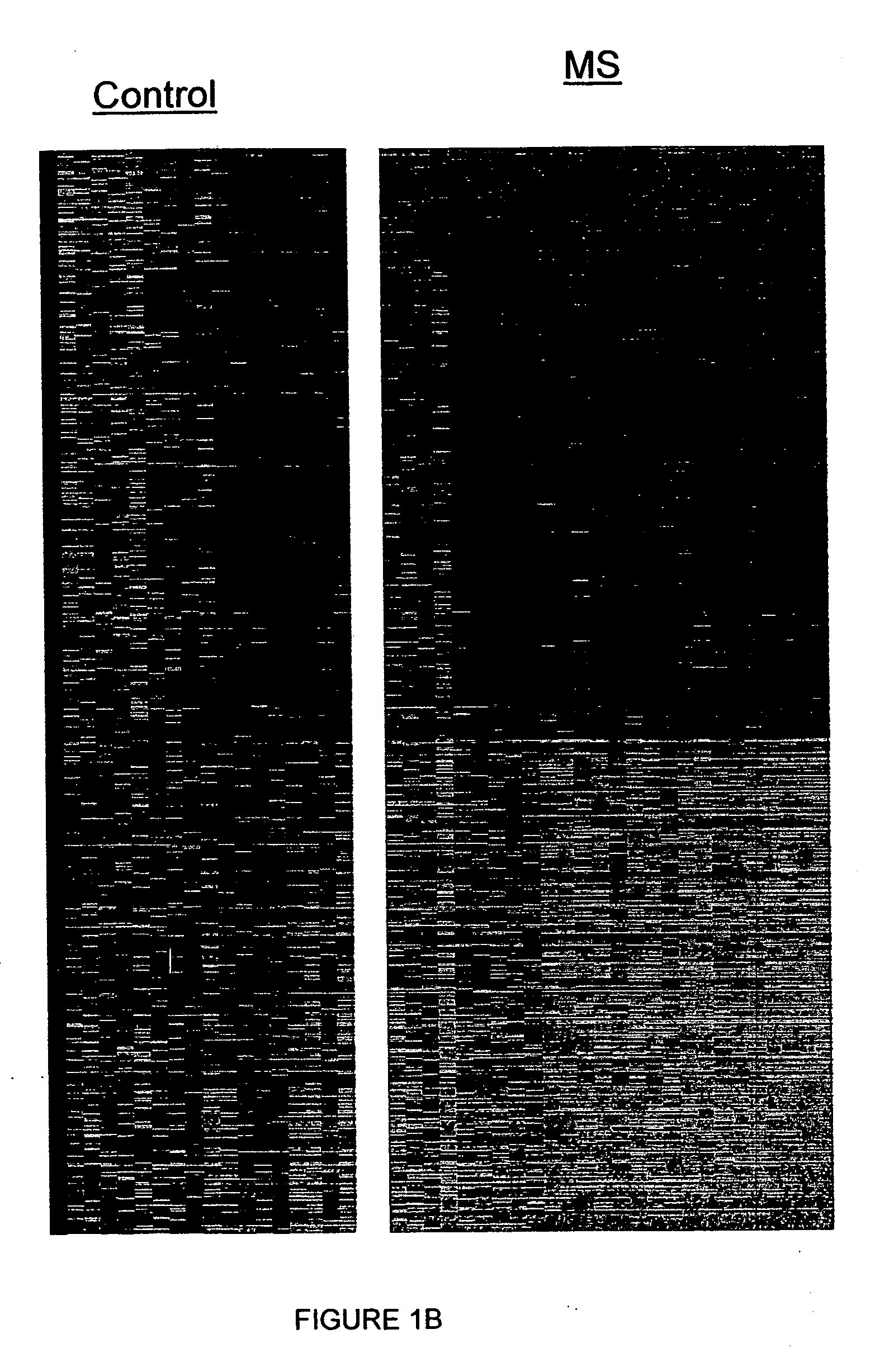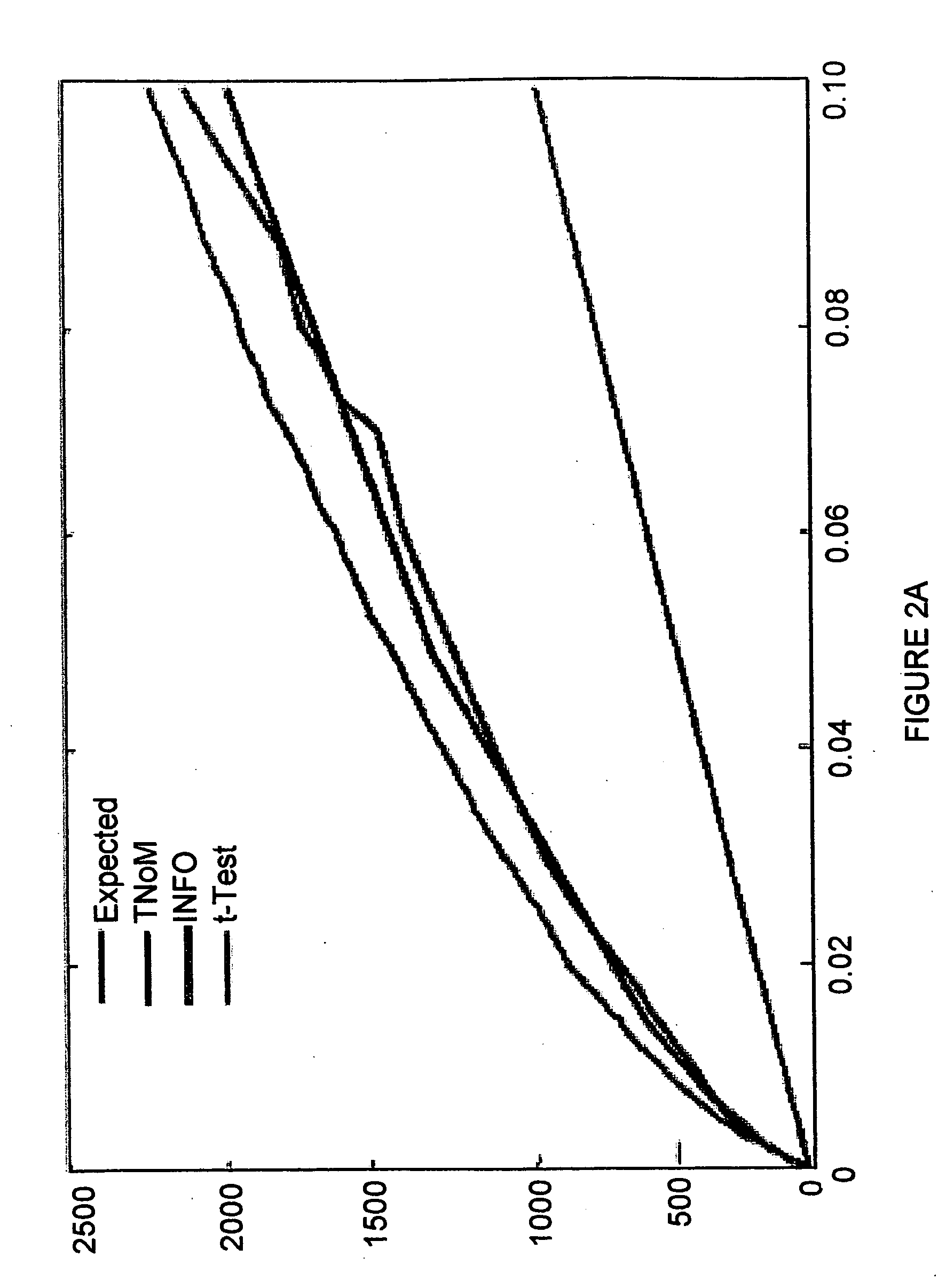Peripheral blood cell markers useful for diagnosing multiple sclerosis and methods and kits utilizing same
a technology of multiple sclerosis and markers, applied in the field of diagnosis, treatment assessment and prognosis, can solve the problems of neurological disability and handicap, decreased probability of complete clinical remission, and significant neurological disability
- Summary
- Abstract
- Description
- Claims
- Application Information
AI Technical Summary
Problems solved by technology
Method used
Image
Examples
examples
[0135] Reference is now made to the following examples, which together with the above descriptions, illustrate the invention in a non limiting fashion.
[0136] Generally, the nomenclature used herein and the laboratory procedures utilized in the present invention include molecular, biochemical, microbiological and recombinant DNA techniques. Such techniques are thoroughly explained in the literature. See, for example, “Molecular Cloning: A laboratory Manual” Sambrook et al., (1989); “Current Protocols in Molecular Biology” Volumes I-III Ausubel, R. M., ed. (1994); Ausubel et al., “Current Protocols in Molecular Biology”, John Wiley and Sons, Baltimore, Md. (1989); Perbal, “A Practical Guide to Molecular Cloning”, John Wiley & Sons, New York (1988); Watson et al., “Recombinant DNA”, Scientific American Books, New York; Birren et al. (eds) “Genome Analysis: A Laboratory Manual Series”, Vols. 1-4, Cold Spring Harbor Laboratory Press, New York (1998); methodologies as set forth in U.S. P...
example i
Accurate Gene Expression Profiles of MS
[0142] In order to provide an accurate, reliable profile of gene markers for diagnosis and evaluation of MS, DNA chip analysis was used to compare multiple gene expression patterns of PBMCs from patients with different clinical forms of MS. After informed consent blood was obtained from 26 patients (20 females, mean age 41.0±2.5 years) with definite diagnosis of MS according to Poser criteria, a relapsing-remitting disease course, and brain magnetic resonance imaging ascertaining the diagnosis. Eighteen age-matched healthy subjects (16 females) served as controls. PBMC gene expression of 12,625 human genes was analyzed as described hereinabove, using Ficoll™ for preparation of PBMCs and total RNA purification and sample preparation according to the instructions of Affymetrix, Inc (Affymetrix, Santa Clara Calif., USA). In order to determine the most informative genes, unique computerized scoring methods, as yet not applied to analysis of data r...
example ii
Stage Specific Gene Expression Profiles of MS
[0155] Accurate clinical tools for specific diagnosis of disease stages in MS are presently unavailable. In order to provide a useful profile of the clinically defined stages of MS, specific gene expression was evaluated in relation to clinical disease phases. Significant overabundance was found between the number of observed and expected genes expressed in MS patients during an acute relapse and in remission (FIG. 2A). Using the methods described hereinabove, the 743 most informative genes (302 up-regulated and 441 down-regulated) with p-value<0.05 in all three scores (t-test, TNoM, INFO) that differentiated relapse from remission (FIG. 2B, Table III) were identified.
[0156] Over-expressed genes in acute relapse of MS, compared to patients in remission—The most informative over-expressed genes included CTSL (Lysosomal cystein protease L, cathepsin L) known to play a role in MHC class II antigen presentation, responsible for quantitative...
PUM
| Property | Measurement | Unit |
|---|---|---|
| time | aaaaa | aaaaa |
| MRI | aaaaa | aaaaa |
| electron microscopy | aaaaa | aaaaa |
Abstract
Description
Claims
Application Information
 Login to View More
Login to View More - R&D
- Intellectual Property
- Life Sciences
- Materials
- Tech Scout
- Unparalleled Data Quality
- Higher Quality Content
- 60% Fewer Hallucinations
Browse by: Latest US Patents, China's latest patents, Technical Efficacy Thesaurus, Application Domain, Technology Topic, Popular Technical Reports.
© 2025 PatSnap. All rights reserved.Legal|Privacy policy|Modern Slavery Act Transparency Statement|Sitemap|About US| Contact US: help@patsnap.com



